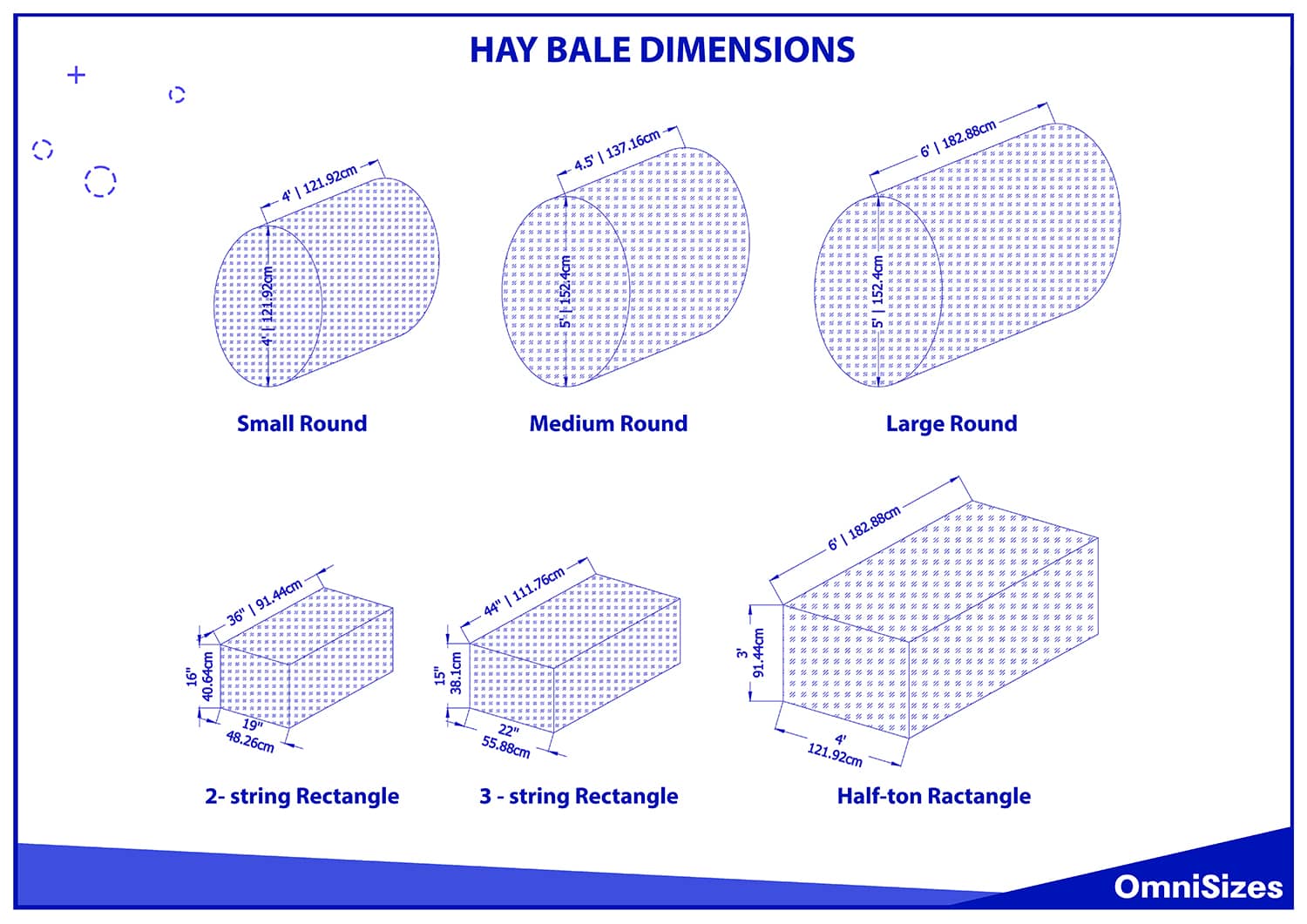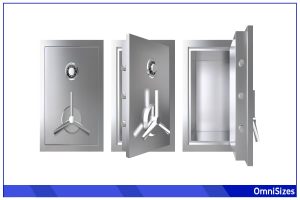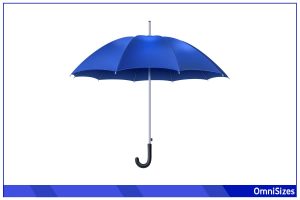Hay bales are often seen dotting fields or stacked in barns in rural landscapes. Hay bale dimensions play a significant role in agricultural practices, from feeding livestock to transportation and storage.
Hay bales come in a variety of shapes and sizes, with the most common shapes and sizes being:
| Size Category | Dimensions |
| Small Round | 4 × 4 ft. |
| Medium Round | 5 × 4.5 ft. |
| Large Round | 5 × 6 ft. |
| 2-string Rectangle | 36 × 19 × 16 in. |
| 3-string Rectangle | 44 × 22 × 15 in. |
| Half-ton Rectangle | 6 × 4 × 3 ft. |
The exact dimensions will vary between suppliers.

This guide will cover hay bale dimensions, nutritional content, and other aspects involved in purchasing and caring for hay bales.
A Brief Breakdown of Hay Bales
A hay bale is a compact bundle of dried grass or other forage commonly used in agriculture. Farmers create these bales to store and transport hay efficiently. The process involves cutting, drying, and then compressing the hay into a manageable shape, which can be either round or rectangular.
Hay bales are primarily made from grasses like timothy, bermudagrass, or alfalfa. The choice of grass depends on the nutritional needs of the livestock and the local climate. The process starts with mowing the hay, followed by tedding (spreading it out to dry) and raking it into rows. Once dry, a baler compresses the hay into bales, which are then bound with twine or netting.
The most common hay bale types are round and rectangle:
- Round Bales: These are large, cylindrical bales typically used for feeding larger herds of livestock.
- Rectangle Bales: Smaller and more rectangular, rectangle bales are easier to handle manually.
Hay Bale Dimensions
Hay bale dimensions vary depending on their type and intended use. The size of the bale affects how they’re stored, transported, and used in farming. The exact dimensions of “standard” hay bales will vary between suppliers.
Dimensions of Round Bales
- Standard Sizes: Typically, round bales are about 60 inches in diameter and 48 inches in width. However, they can vary, with some being larger for commercial use.
- Weight and Volume: These bales can weigh between 800 to 1,200 pounds, making them suitable for feeding large herds but challenging to move without equipment.
Dimensions of Rectangle Bales
- Common Measurements: Rectangle bales are generally smaller, often measuring 36 inches in length, 18 inches in width, and 14 inches in height.
- Handling and Storage: Their smaller size and weight, about 40 to 60 pounds, make them easier to handle manually and more convenient for small-scale farming or individual livestock feeding.
Customizing Bale Dimensions
Hay bales don’t have to come in one standard size. Customizing bale dimensions is a practical approach for many farmers, whether it’s for storage convenience, feeding smaller livestock, or optimizing transportation.
Factors Influencing Customization
- Type of Baler: Different balers offer varying degrees of size customization. Some allow for adjustments in bale length and density, which can significantly alter the dimensions.
- Farmers’ Needs: Customization depends on individual requirements such as storage space, the type of livestock being fed, and the available machinery for handling bales.
Customizing Round Bales
- Size Variations: While the standard round bale size is about 60 inches in diameter, farmers can adjust this to a larger or smaller diameter depending on their needs.
- Usage Considerations: Larger round bales might be more cost-effective for feeding large herds, but they require more storage space and heavier machinery for handling.
Customizing Rectangle Bales
- Adjusting Dimensions: Rectangle bales can be customized more easily, with changes in length, width, and height. This flexibility is particularly useful for small farms or specialized livestock feeding.
- Handling and Storage: Smaller rectangle bales are easier to handle manually and store, which can be beneficial for smaller farms or for use in areas with limited access.
Bale Size and Nutritional Content
While the size of a hay bale doesn’t change the nutritional value, factors associated with different bale sizes, like the rate of drying and storage conditions, can affect the quality and preservation of nutrients.
Nutritional Factors in Hay Bales
- Moisture Content: Properly dried hay retains more nutrients. Larger bales, due to their density, might have a higher risk of retaining moisture, which can lead to mold and nutrient loss.
- Exposure to Elements: Smaller bales are often more exposed to air and light, which can lead to a quicker degradation of certain nutrients.
How Bale Size Influences Feeding
- Large Bales: Best suited for feeding large herds. However, once opened, the hay is exposed, and nutrients can degrade faster.
- Small Bales: More manageable for controlled feeding, allowing for better rationing and less waste, potentially preserving nutritional quality.
Comparing Bale Sizes and Nutritional Preservation
| Bale Size | Moisture Management | Exposure to Elements | Ease of Use |
| Large Round Bales | Higher risk of moisture retention | Less exposure, slower degradation | More challenging to manage |
| Small Rectangle Bales | Easier to dry thoroughly | More exposure, quicker degradation | Easier to handle and use |
Storage and Transportation Based on Bale Dimensions
The size of hay bales significantly influences how they are stored. Efficient storage is essential for maintaining the quality of the hay and ensuring it remains dry and free from pests.
Storing Large Round Bales
- Space Requirements: Due to their size, round bales require more storage space.
- Outdoor Storage: They are often stored outside, which can expose them to weather elements. Using covers or tarps is recommended to protect them from moisture.
- Stacking: Proper stacking methods are necessary to prevent bales from collapsing and to allow air circulation.
Storing Small Square Bales
- Indoor Storage Advantage: Smaller bales are typically stored indoors, in barns or sheds, which protects them from weather and pests.
- Efficient Use of Space: They can be stacked high, making efficient use of vertical space.
Transportation Considerations
Transporting hay bales, whether to market or within a farm, requires planning, especially considering the size and weight of the bales.
Here’s what you need to know about transporting large hay bales:
- Heavy Machinery Requirement: Due to their weight, large round bales often need tractors or loaders for transportation.
- Loading and Unloading Challenges: Specialized equipment like bale spears or loaders is often required for loading and unloading these bales.
While transporting smaller hay bales can be less challenging, there are still a few things worth remembering:
- Easier to Handle: Smaller bales can be moved manually or with smaller machinery, offering more flexibility in transportation.
- Vehicle Requirements: They can be transported in smaller vehicles like pickups or trailers, making them more accessible for small-scale farmers.






